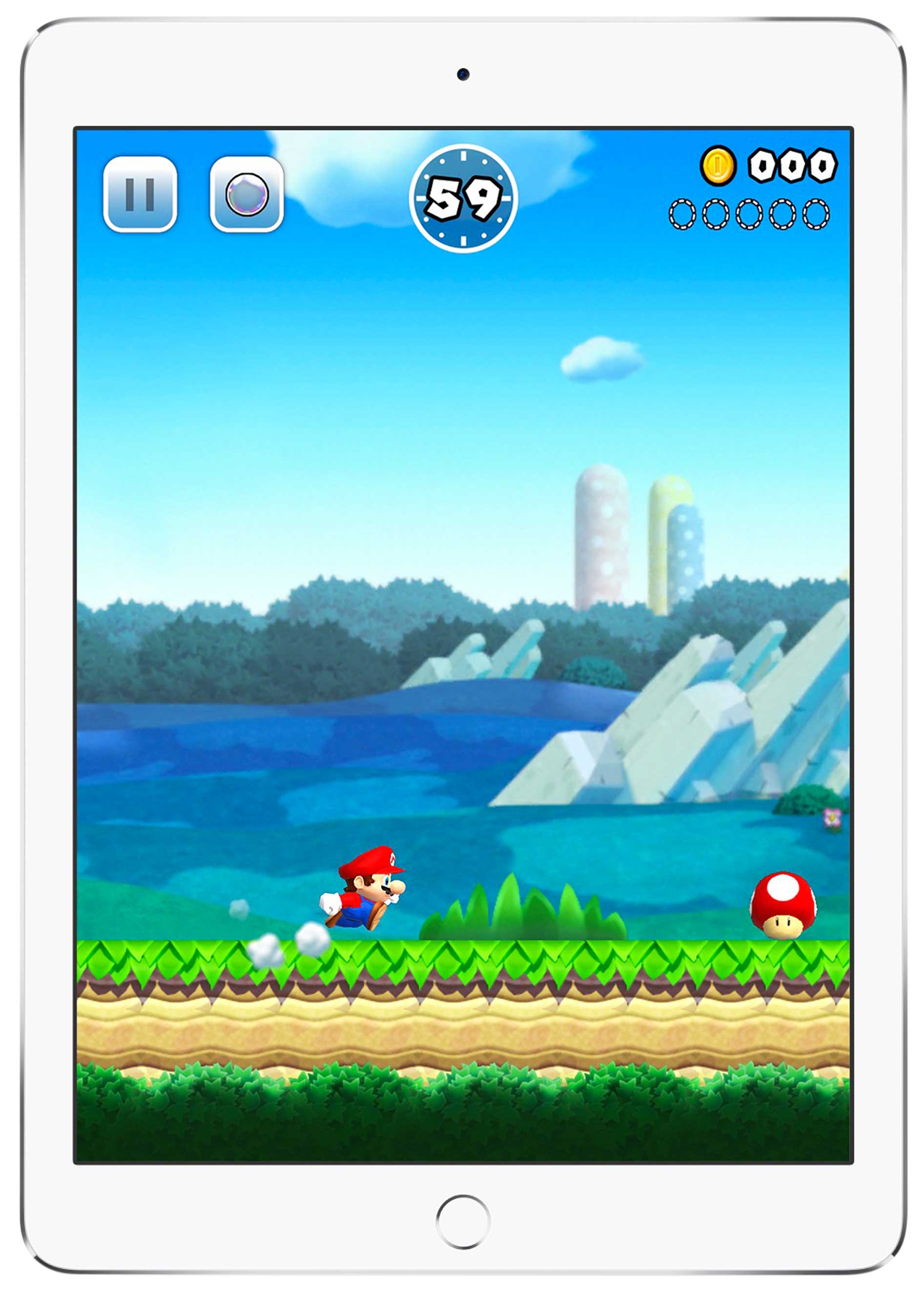
This was not supposed to happen. For years, fans had pleaded, cajoled and bullyragged Nintendo to put Mario on smartphones. And for years, the masterminds behind some of gaming’s most enduring franchises simply refused. Until Dec. 15, when Nintendo released Super Mario Run (free to try, $9.99 for full access), a vamp on the iconic series about a turtle-clobbering plumber, for Apple iPhones and iPads. The bigger surprise? Super Mario Run is excellent.
This is the Mario those who grew up with Nintendo know best, the one who dashes from left to right across fields of grassy blocks, rivers of coins and grooving flora. The difference is that Mario (or other characters players can eventually unlock, like Luigi and Princess Peach) moves automatically as soon as a level loads, animated by an algorithm. Instead of controlling Mario directly, players tap to interrupt his default motion and make more imaginative choices. Like redirecting him to sop up rows of coins or trounce enemies with last-second spins. A quick rap makes Mario hop, while a longer one boosts him twice as high. If you need to clear a chasm, tap midair and he’ll pirouette, gliding a bit further. It’s intuitive. Yes, you really can play one-handed.
The simplicity masks deeper layers. Tap near a wall or when landing on blocks painted with reverse arrows, for instance, and Mario springs backward, letting you subvert the game’s one-wayness. Some of Super Mario Run’s smartest sequences involve sussing out zigzag trajectories hidden in plain sight–where sticking your landings requires genuine mastery of the new tap-swipe controls. Left to his own devices, Mario automatically springs over low obstacles or enemies in his path, freeing players to focus on big-picture antics. It’s smart, less-is-more design that plays to the strengths of touchscreen gaming without sacrificing precision. For all its hesitance in embracing smartphones and tablets, Nintendo seems to have had no trouble designing software for them.
Taps and swipes aren’t stand-ins for button presses, but a kind of parallel grammar for engaging with a boisterous little red-and-blue missile fired each time the clock starts. This is Mario in a garden of forking paths, a relentless money-Hoover who trips into armfuls of jingling cash, but who’ll take artful finessing to snatch a level’s coveted collectibles.
There is one fairly serious problem with Super Mario Run: the game works only with an active Internet connection. Sever that and the game throws up an error screen. There’s no way around it. This means you can’t play Super Mario Run on a plane without paying for wi-fi. You’re out of luck for the part of your subway commute that involves cell-service dropouts. And you’ll have to proxy the kids’ iPads through a smartphone if, like me, you live in flyover country and drive for hours to visit the in-laws.
Other than that, Super Mario Run impresses in ways sure to convince that designing games on smartphones is still a rapidly evolving–and improving–art form.
More Must-Reads from TIME
- Cybersecurity Experts Are Sounding the Alarm on DOGE
- Meet the 2025 Women of the Year
- The Harsh Truth About Disability Inclusion
- Why Do More Young Adults Have Cancer?
- Colman Domingo Leads With Radical Love
- How to Get Better at Doing Things Alone
- Michelle Zauner Stares Down the Darkness
Write to Matt Peckham at matt.peckham@time.com